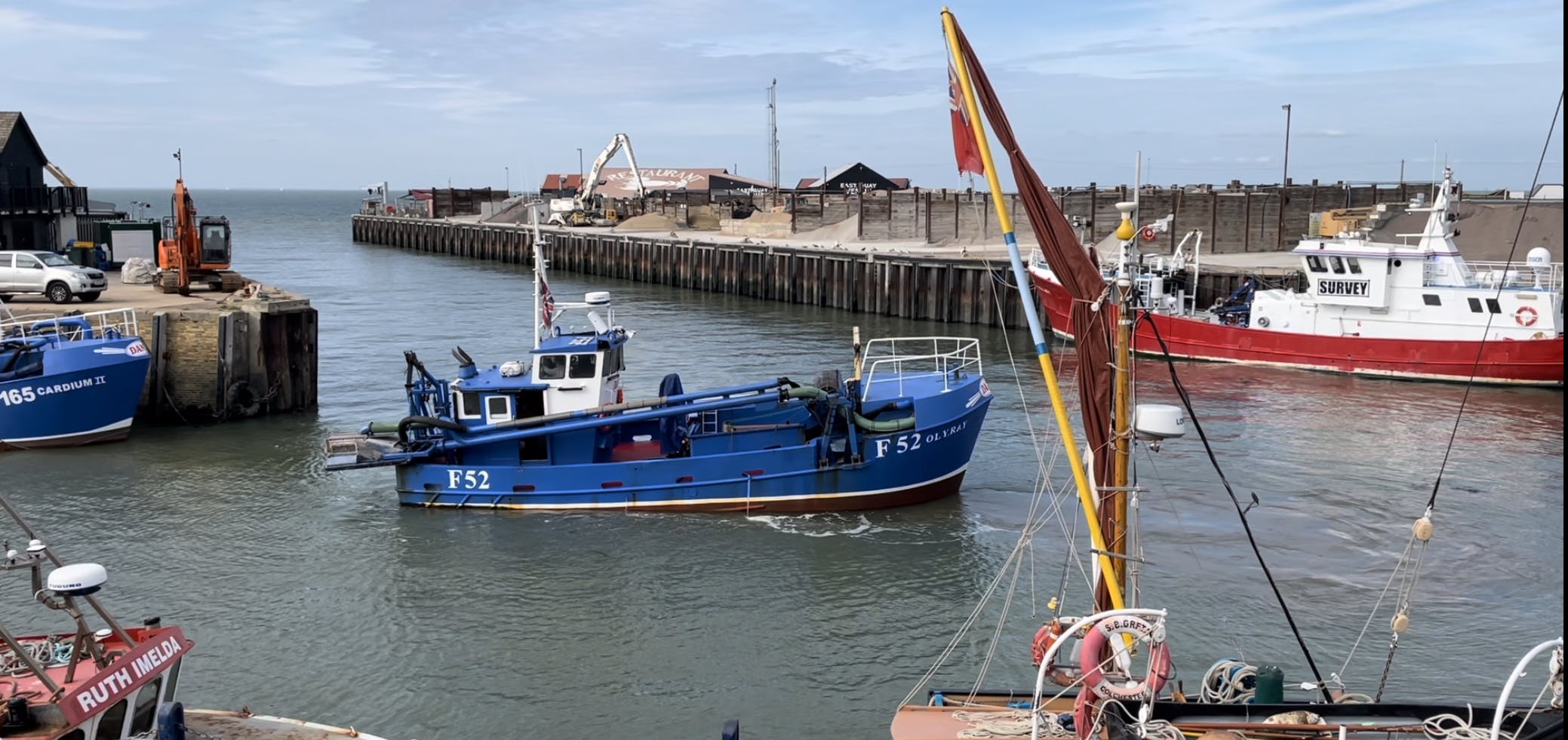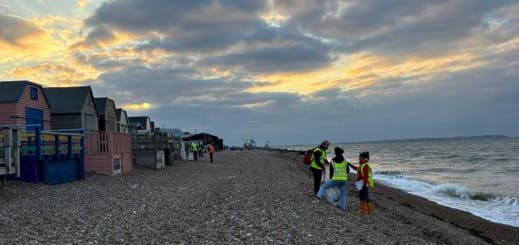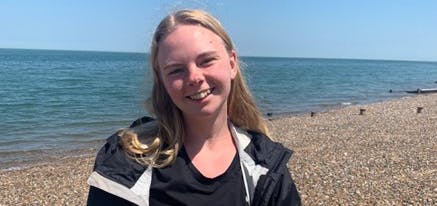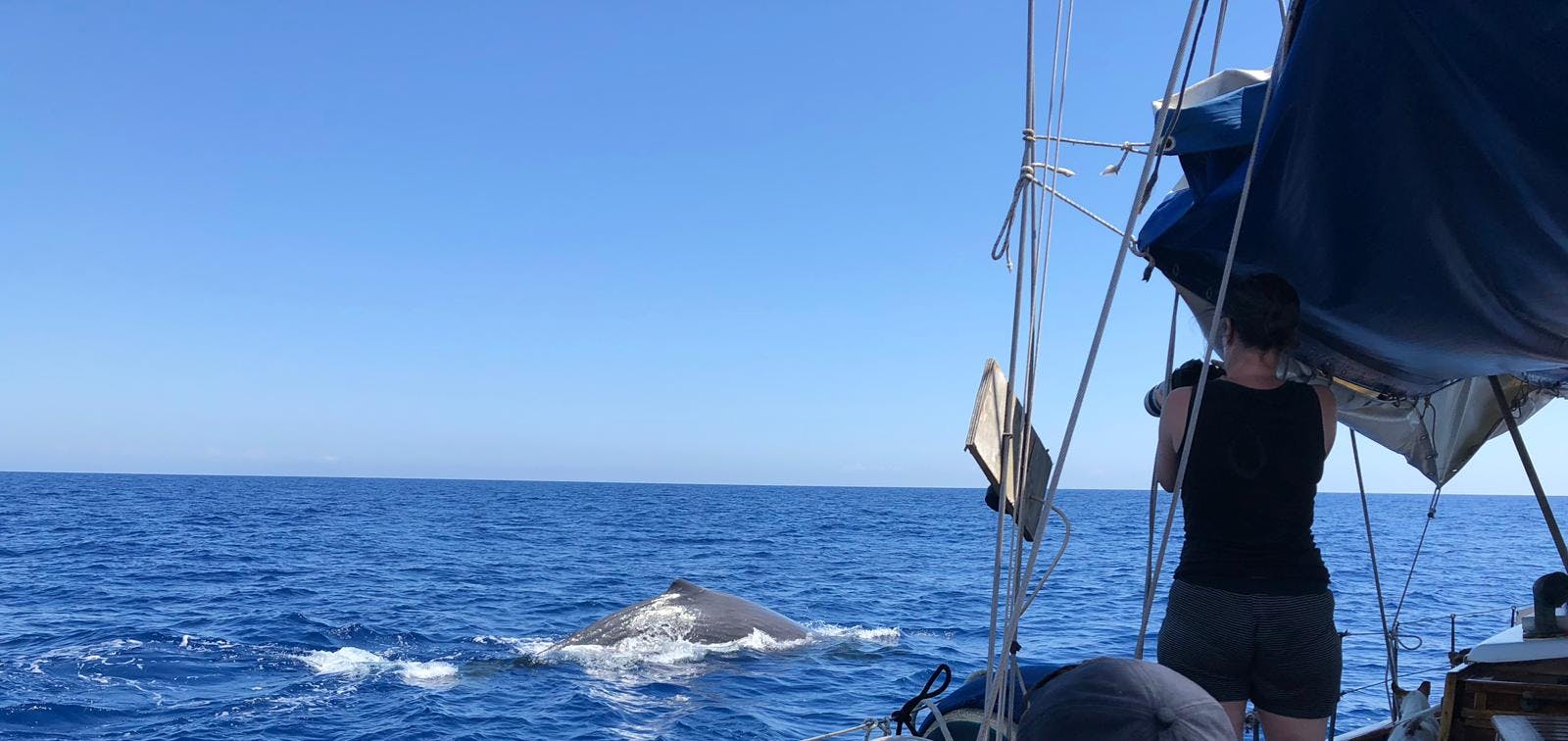During his 2023 Coast Explorer Internship, Max Renton undertook a project investigating the views, opinions and ecological knowledge of Kent's fishing communities in order to build a better understanding of how to best address marine conservation issues. Read on to learn more about the background and key findings of his research.
Our aim
The project’s aim was to build an understanding of the inshore fisheries around Kent, to give an insight of the pressures on the areas the Kent Wildlife Trust Group (KWTG) are trying to protect. By doing so, it aimed to give valuable insights into where KWTG efforts to protect and restore the marine environment are best placed.
What can fishers tell us?
Fishers play a major role in the marine environment. Fishers' local ecological knowledge (FEK) is knowledge that is held by fishers about their local ecosystems and has been derived from human–environment interactions and observations. This knowledge is created when harvesting natural resources during their lifetime, in combination with information passed down from previous generations. With this in mind, the project aimed to reveal how the KWTG can work closer with the fishers to benefit both the marine environment and the fisheries
Objectives
- Find out the main landing locations in Kent, what is being landed, what methods are being used and how many vessels there are.
- Find out the main fishing associations in Kent and how they operate, in order to better understand how to effectively communicate with local fishing communities.
- Explore and document the views and opinions of local fishing communities in Kent.
Kent’s fishing ports

Kent has 13 fishing ports, with a total of 65 commercial fishing vessels in 2023. The ports with the highest density of fishing vessels are Whitstable, Folkestone and Ramsgate. Fishing vessels in these three ports mainly target cockle, whelk, native oysters, lobster, brown crab, bass, smoothhound, thornback ray and dover sole. Fishers also target species including Atlantic mackerel, lemon sole, plaice, mullet, herring, cuttlefish, gurnard, whiting, turbot, dab and brill.
Fishing methods include: hydraulic dredging, whelk potting, rod and line, longlining, pots and traps, oyster dredging, bottom drift netting and static netting using gill and trammel nets, surface drift netting, otter trawling, and pelagic trawling.
The Thames estuary sustains some of the largest populations and fisheries of cockles in the UK. The fishery is one of the oldest and most important fisheries in Europe. In Kent, a total of 2,560 tonnes of cockles were landed in 2022. Hydraulic Suction Dredges are used to capture cockles. This is one of the only methods to harvest cockles and the most efficient. The fishing season runs from July to October and is managed by two local byelaws: the Thames Estuary Cockle Fishery Order (TECFO) 1994; and the Cockle Fishery Flexible Permit Byelaw (CFFPB). Kent and Essex Inshore Fisheries Conservation Authority are responsible for managing and enforcing these local byelaws.
Fishing Associations
Whitstable Fishing association - Fishing fleet based in Whistable
Thanet Fishing Association - Fishing fleet based in Thanet ports, mainly Ramsgate. Established for over 30 years. Members vessels are mostly under 10 meters in length.
Thames Estuary fishing Association - Fishing fleet of 14 members based in the Thames estuary. Mainly represents cockle fishing vessels.
Current state of Kent’s inshore fisheries

Voluntary in-person interviews were conducted with inshore commercial Kent fishers to gain an understanding of their view on the current state of Kent’s inshore fisheries.
Analysis of the open questions from interviews conducted with Kent fishers revealed that they were facing many issues which impacted their fishing. The issues referenced the most were dredging (aggregate dredging, dredging work to deepen channels and ports, and maintenance dredging, not the fishing method), conflict with seals, decrease in soles. Dredging was referenced the most and was the only issue to be referenced by all five fishers. Fishers stated that it was a difficult time for fishers in Kent, with these issues having a significant impact on their livelihood. Only the cockle fishing industry appears to be facing few issues.
Fishers believe that the many dredging projects taking place in the Thames Estuary has led to the collapse of inshore fish stocks in Kent. There is currently insufficient scientific basis to understand the effects dredging may be having on important fish stocks in Kent, especially in the long-term. Previous studies have shown many ways in which dredging can endanger marine ecosystems and in turn affect those which rely upon them. This project highlights the need for studies on the effects of dredging activities on important commercial fish species in Kent. This information will be valuable to improve relationships between fisheries and dredging, and ultimately determine if management is needed to minimise the impact of dredging on the marine environment in Kent.
Fishers highlighted increased conflicts with seals as a significant issue. Seals were reported to take fishers catches from nets, leaving them with little to no fish to land and sell. Fishers also described new behaviours; seals were reported to follow fishing vessels, then exploit their nets when rigged and left to soak. A method to reduce conflict with seals and fishers is essential to reducing seal-induced catch losses and prevent seals being caught as bycatch or becoming injured in nets.
All fishers that targeted Dover sole in the project (four out of five) reported a large reduction in catches. They were concerned about the continuing decreasing catches every year. As an important commercial species, understanding the factors which have contributed to the reduction is essential. It is also necessary to understand the impact the reduction may have on the local marine ecology. The Thames Estuary is a known Dover sole spawning and nursery area. They are important predators of many marine invertebrates and small fish. Changes in abundance could have cascading effects on the ecosystem. Robust scientific research is needed to investigate the reason(s) for the decline, determining if actions need to be taken to protect the species.
Conservation and Fishing
Conservationists and fishers can collaborate to resolve shared or conflicting issues, unifying fisheries management and biodiversity conservation. Human activities from both land-based and marine sources have degraded estuarine, coastal, and marine ecosystems in the UK. Nevertheless, it is an exciting time for nature recovery at sea, as ambitious objectives outlined in the 25 Year Plan and the Environmental Improvement Plan gain momentum, accompanied by a growing adoption of nature-based solutions. Fishers are important stakeholders in the marine environment and can play a crucial role in both: helping the UK reach their targets for enhancing nature in marine and coastal environments; and supporting the future of a wilder Kent.





